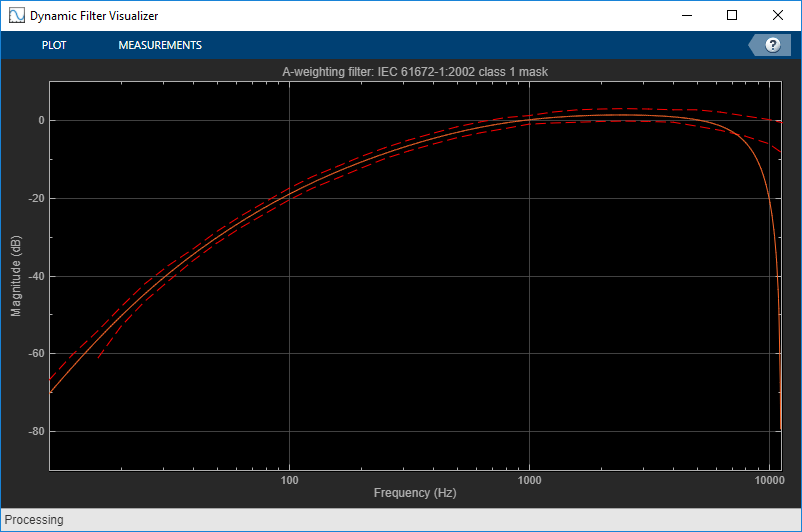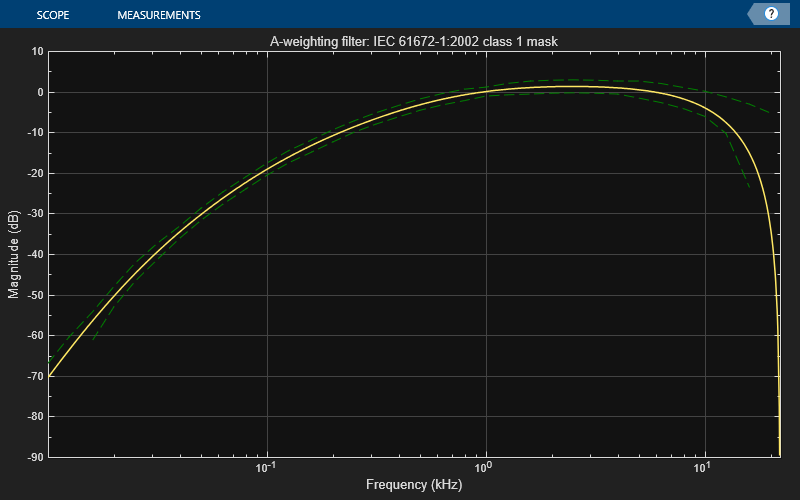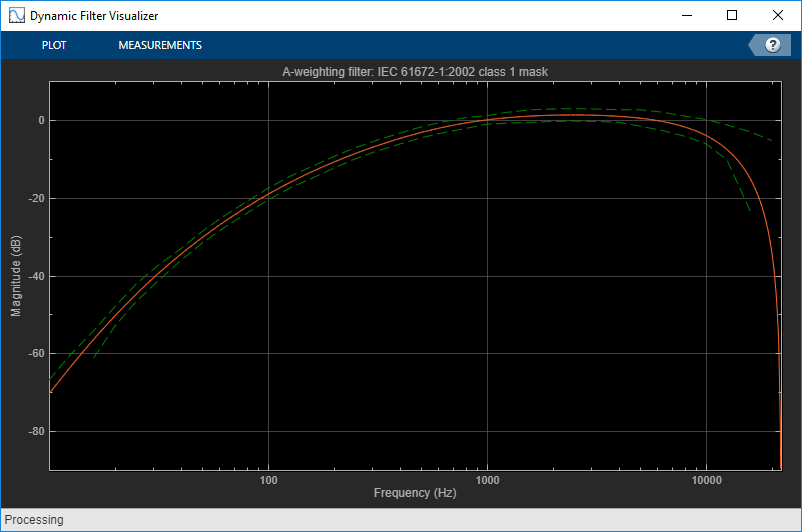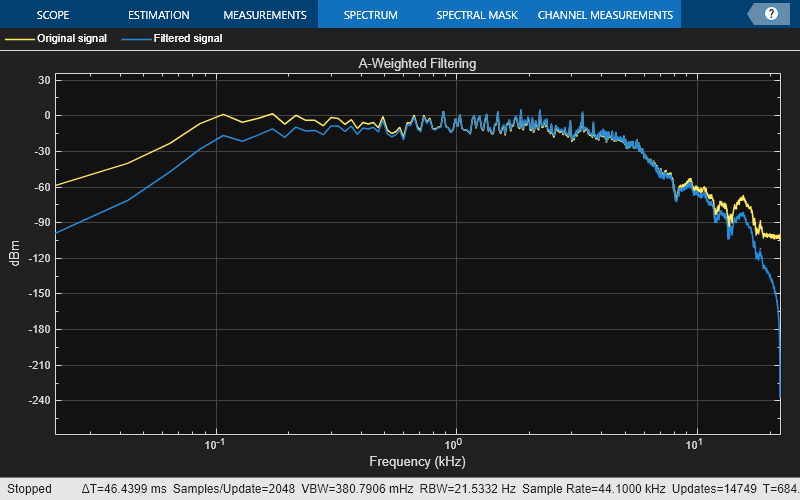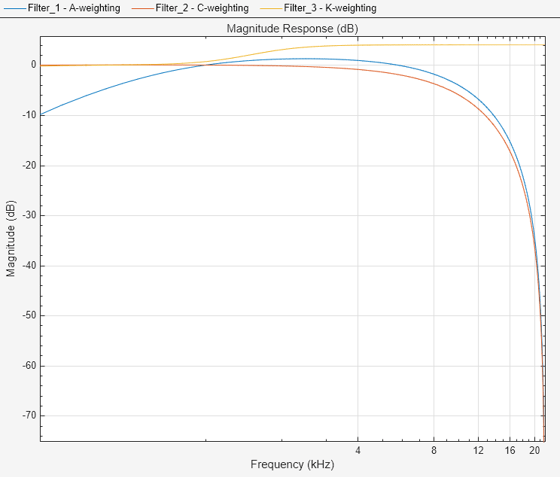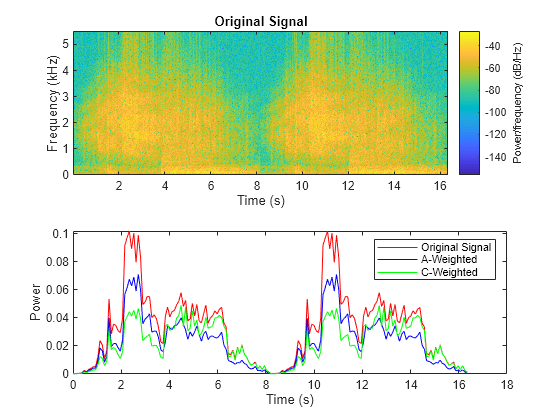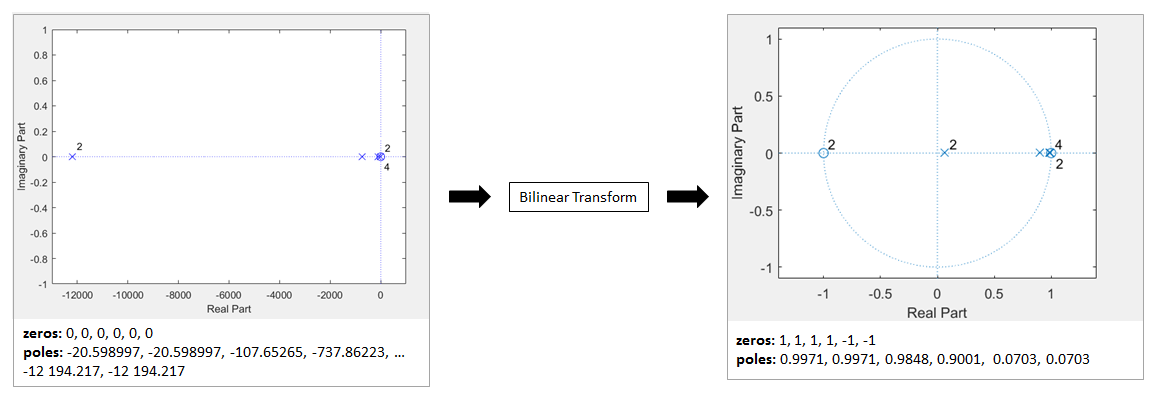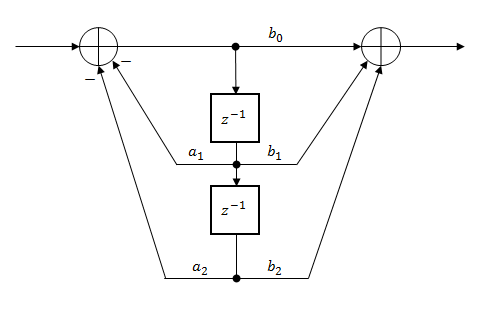weightingFilter
Frequency-weighted filter
Description
The weightingFilter
System object™ performs frequency-weighted filtering independently across each input
channel.

To perform frequency-weighted filtering:
Create the
weightingFilterobject and set its properties.Call the object with arguments, as if it were a function.
To learn more about how System objects work, see What Are System Objects?
Creation
Syntax
Description
weightFilt = weightingFilterweightFilt, that performs frequency-weighted filtering
independently across each input channel.
weightFilt = weightingFilter(weightType)weightType.
weightFilt = weightingFilter(weightType,Fs)Fs.
weightFilt = weightingFilter(___,
sets each property Name,Value)Name to the specified Value.
Unspecified properties have default values.
Example: weightFilt =
weightingFilter('C-weighting','SampleRate',96000) creates a C-weighting filter
with a sample rate of 96,000 Hz.
Properties
Usage
Description
Input Arguments
Output Arguments
Object Functions
To use an object function, specify the
System object as the first input argument. For
example, to release system resources of a System object named obj, use
this syntax:
release(obj)
Note
weightingFilter supports additional filter analysis functions. See
Compare and Analyze Weighting Types for details.
Examples
Algorithms
References
[1] Acoustical Society of America. Design Response of Weighting Networks for Acoustical Measurements. ANSI S1.42-2001. New York, NY: American National Standards Institute, 2001.
[2] International Electrotechnical Commission. Electroacoustics Sound Level Meters Part 1: Specifications. First Edition. IEC 61672-1. 2002–2005.
[3] International Telecommunication Union. Algorithms to measure audio programme loudness and true-peak audio level. ITU-R BS.1770-4. 2015.
[4] Mansbridge, Stuart, Saoirse Finn, and Joshua D. Reiss. "Implementation and Evaluation of Autonomous Multi-track Fader Control." Paper presented at the 132nd Audio Engineering Society Convention, Budapest, Hungary, 2012.
Extended Capabilities
Version History
Introduced in R2016b

